
DPilot
Advanced flight telemetry system with 50Hz unified state communication, real-time web interface, and visual odometry capabilities using custom ESP32 PCB integration and Raspberry Pi AI Camera processing for autonomous flight research.
System Requirements & Development Status
🛡️ Regulatory Compliance
- Drone Operations: Designed for compliance with local UAV/drone regulations (e.g., FAA Part 107 in the US, EASA in the EU). Operators are responsible for adhering to all applicable laws regarding flight altitude, airspace, and registration.
- RF Transmission: LoRa modules operate in the 915MHz ISM band (US) or 868MHz (EU). Ensure operation within legal frequency and power limits as specified by the FCC (US) or local authorities. Maximum transmission power is set to comply with regional requirements.
- Encryption: AES-128 encryption is used for secure communication, following best practices for data privacy and security.
- Camera Use: Visual recording and AI camera features must comply with privacy and data protection laws. Obtain necessary permissions for video capture in
- PCB & Electronics: Custom PCB design follows RoHS and CE guidelines for electronic safety and environmental compliance.
Note: Always check and follow your local regulations for drone operation, RF transmission, and data collection. The DPilot system is intended for research and educational use.
🎯 Mission Requirements
- Range: >15 km mission coverage
- Flight Time: >30 minutes endurance
- Communication: >5 km line of sight
- Update Rate: 50Hz unified state feedback
- Flying speed: >120 km/h capability
- Visual navigation and SLAM
🤖 Development Status
- ✅ 50Hz unified state estimation
- ✅ AES-128 encrypted LoRa communication
- ✅ Frame-synchronized video/data logging
- ✅ Web-based ground control interface
- ✅ Custom PCB design (JLCPCB ready)
- 🔄 Visual odometry implementation
- 📝 AI camera integration (Planned)
- 📝 Full autonomous flight (Future)
⚙️ System Architecture
- Total cost: <$300 (including aircraft)
- Modular & expandable design
- Cross-platform compatibility
- Always-on WiFi hotspot access
- PCB fabrication
The System in some videos
System Architecture & Interface
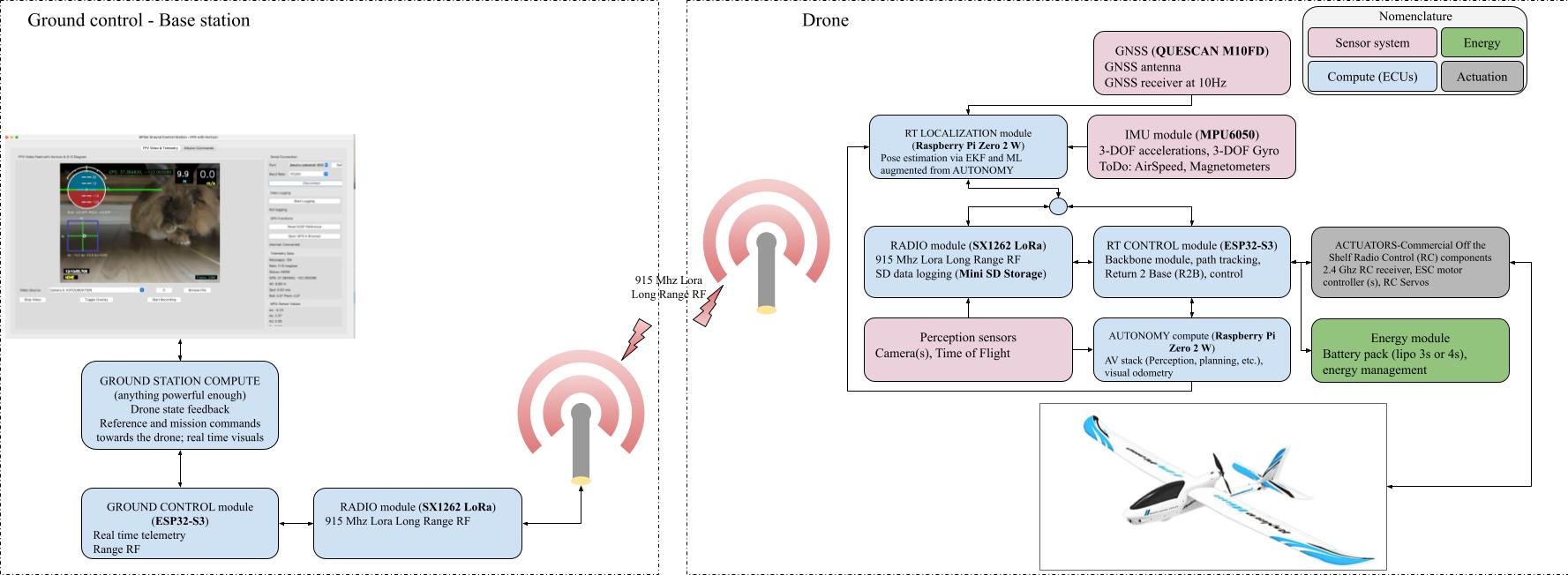
Complete System Architecture
Ground control, telemetry and drone system overview

Web Interface Dashboard
Live telemetry dashboard with smartphone-accessible controls and artificial horizon
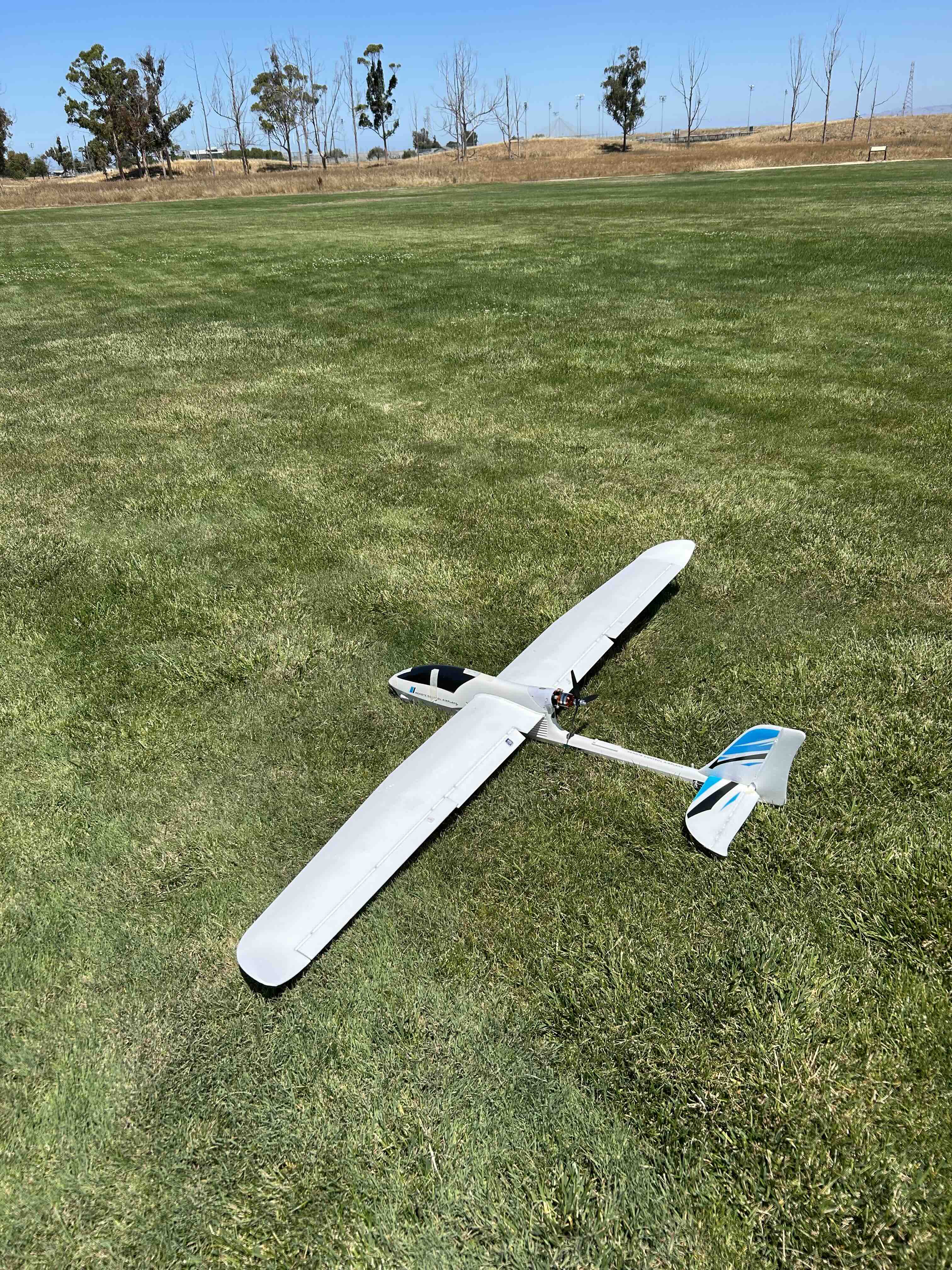
Aircraft Integration
VolantexRC Ranger with 3D printed components and visual odometry camera
System Features
🔄 Unified State Architecture
- 50Hz synchronized telemetry transmission
- 60-byte complete state packets
- Perfect data alignment and timing
- Zero correlation issues
- Mission command integration
📡 Advanced Communication
- 915MHz LoRa with 2-5km range
- AES-128 encryption security
- Anti-aliasing data processing
- Automatic role detection
- Binary protocol optimization
🌐 Professional Web Interface
- Always-on WiFi hotspot mode
- Live telemetry dashboard (1Hz update)
- Smartphone-accessible control
- Real-time artificial horizon
- G-G acceleration diagrams
- Remote recording management
🎬 Synchronized Video Recording
- Raw and overlay recording modes
- Perfect frame-CSV synchronization
- H.264 encoding with telemetry overlay
- 30fps video with flight instruments
- Automatic file management
🧠 Visual Navigation System
- Raspberry Pi AI Camera support
- Sony IMX500 12MP sensor
- Visual odometry processing
- Real-time feature detection
- Position estimation and SLAM
- Autonomous navigation capability
🔧 Custom PCB Integration
- Professional 2-layer PCB design
- JLCPCB manufacturing ready
- Integrated MPU6050, SD, LoRa
- 3D printed environmental protection
- Optimized for aircraft installation
Technical Specifications
🧠 Kalman Filter Attitude Estimation
DPilot employs a sophisticated 5-state Kalman filter for high-precision attitude estimation, fusing accelerometer and gyroscope data to deliver robust roll and pitch measurements even during dynamic flight conditions.
Filter Architecture
- State Vector: [roll, pitch, roll_rate, pitch_rate, yaw_rate]
- Update Rate: 50Hz with non-uniform time handling
- Gyro Integration: Dynamic time-step adjustment
- Bias Correction: Calibrated yaw rate bias removal
- Noise Models: Tuned process and measurement covariances
Innovation Analysis
- Real-time Monitoring: Innovation factor visualization
- Statistical Analysis: Means and standard deviations
- Performance Target: <2° steady-state accuracy
- Convergence: Rapid filter stabilization (<1s)
- Robustness Target: Maintains accuracy during dynamic flying
The filter employs a two-step prediction-correction approach, first integrating gyroscope data for rapid attitude updates, then using accelerometer measurements to correct drift. The innovation factor (difference between predicted and measured values) provides real-time insight into filter performance and convergence.
This implementation handles gyroscope bias, non-uniform sampling times, and maintains high accuracy during aggressive maneuvers by carefully tuning the process and measurement noise covariance matrices.
Complete Hardware Integration
🛩️ Aircraft Platform
Main Aircraft
- Model: VolantexRC Ranger 1600/2000
- Wingspan: 1600mm/2000mm EPO foam
- Configuration: Pusher, PNP ready
- Weight: 1500-1700g with telemetry (depending on Battery)
- 🔗 Source Link
Propulsion System
- Motor: D3536 Brushless 1450KV
- Propeller: 8x6 3-blade pusher
- ESC: 60A with 4A UBEC
- Mount: Custom 3D printed
- 🔗 Motor Link
Wing Configuration
- Standard: Ranger 1600 wings
- Slow Flight: Ranger 2000 wings
- Flaps: Servo-controlled (2000)
- Sensors: Wing loading monitoring
🖥️ Computing & Vision System
Mission Computer
- CPU: Raspberry Pi Zero 2 W
- RAM: 512MB LPDDR2
- Storage: 32GB+ microSD
- Housing: Custom 3D printed bucket
- 🔗 Source Link
Camera System
- Standard: OV5647 5MP Sensor
- Resolution: 1080p @ 30fps
- Upgrade: AI Camera with IMX500 (optional)
- Mounting: Downward + 15° forward
- 🔗 Source Link
Custom PCB Module
- Design: 2-layer JLCPCB
- Controller: ESP32-S3 + SX1262
- Sensors: MPU6050 IMU integrated
- Storage: SD card module
📡 Communication & Display
Heltec WiFi LoRa 32 V3 (Drone & Ground)
- MCU: ESP32-S3 dual-core
- LoRa: SX1262 @ 915MHz
- Display: 0.96" OLED 128x64
- Power: USB-C powered
- Range: 2-5km line of sight
- Encryption: AES-128 security
- 🔗 Official Documentation
⚡ Power & Storage System
Power Regulation
- Converter: LM2596 DC-DC Buck
- Output: 5V regulated @ 3A
- Input: ESC UBEC 5V @ 4A
- Efficiency: >85% typical
- 🔗 Source Link
Data Storage
- Module: Micro SD card breakout
- Interface: SPI with pins
- Capacity: 32GB+ Class 10
- Integration: On custom PCB
- 🔗 Source Link
Power Budget
- Pi Zero 2W: 4W peak with AI camera
- Custom PCB: 2W with LoRa TX
- Total Aircraft: ~7.5W continuous
- Flight Time: >2 hours endurance
System Architecture & Data Flow
Complete System Integration
Custom PCB Integration (JLCPCB)
PCB Specifications
- Manufacturer: JLCPCB Professional
- Layers: 2-layer cost-effective
- Size: ~50x40mm aircraft fit
- Finish: HASL/ENIG RoHS
- Components: ESP32-S3, SX1262, MPU6050
Integration Benefits
- Professional manufacturing quality
- Reduced wiring complexity
- Optimized RF performance
- Integrated sensor fusion
- 3D printed environmental protection
Aircraft Mounting Strategy
Aircraft Platform Specifications
| Parameter | Ranger 1600 | Ranger 2000 | Notes |
|---|---|---|---|
| Wingspan | 1600mm | 2000mm | EPO foam construction |
| Length | 1075mm | 1075mm | Pusher configuration |
| Wing Area | 26.5dm² | 32.8dm² | High aspect ratio |
| Flying Weight | 1200-1500g | 1200-1500g | With telemetry system |
| Speed Range | Normal operations | Slow flight capable | Visual odometry optimized |
| Flap Control | None | Servo-controlled | Enhanced landing approach |
System Testing & Performance
Verified Performance Metrics
Communication Performance
- Unified State Rate: 50Hz ±1Hz sustained
- LoRa Success Rate: >95% at operational range
- Command Latency: <100ms typical
- Range Testing: >2km line of sight verified
- Encryption Overhead: <5ms per packet
Data Quality Metrics
- GPS Update Rate: 10Hz after configuration
- IMU Data Quality: <3% duplicate rate
- Video Synchronization: Frame-perfect CSV alignment
- Power Efficiency: >2 hour flight endurance
- Temperature Stability: MPU6050 calibrated
Testing Progression
Ground Testing
- Power system verification
- LoRa communication range test
- Sensor calibration and alignment
- 50Hz unified state verification
- AI camera and visual processing
- Web interface functionality
- Command response testing
Flight Testing
- Taxi tests with sensor validation
- Range tests at operational distance
- Short flights with basic telemetry
- Extended flights for endurance
- Visual odometry validation
- Mission command following
- Autonomous flight capabilities
Data Analysis
- Telemetry data quality analysis
- Video-CSV synchronization check
- Visual odometry accuracy assessment
- Power consumption optimization
- Communication reliability metrics
- System performance profiling
- Research data validation
Technical Documentation
📚 Complete Documentation
System architecture, PCB files, 3D models, and implementation guide
🔧 PCB Design Files
Professional PCB design files ready for JLCPCB manufacturing
🖨️ 3D Print Files
Custom buckets, mounts, and environmental protection components
💻 Source Code
ESP32 firmware, Python ground control, and web interface code
Ground Control Station
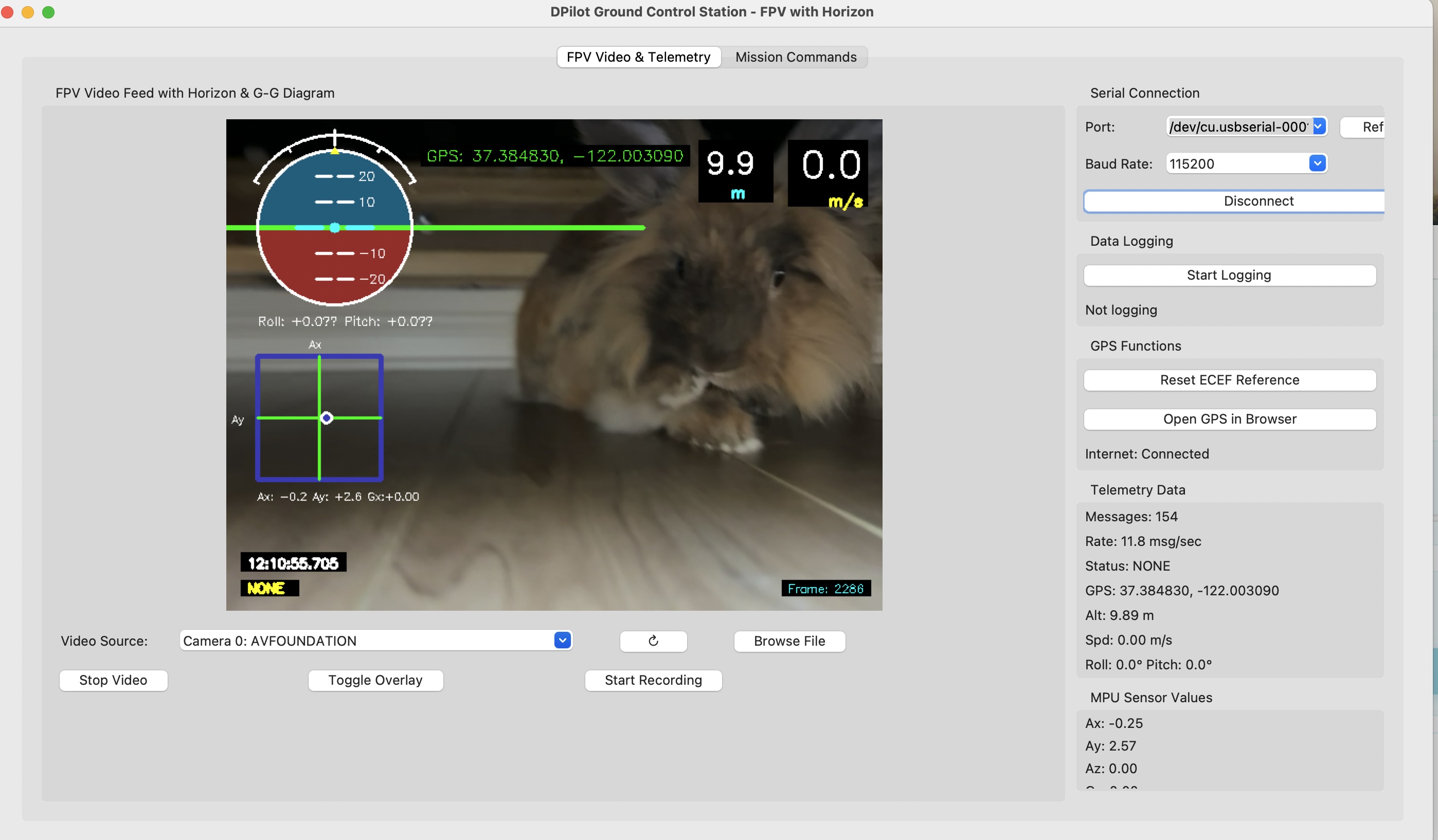
Desktop Ground Control
Python application with FPV video overlay
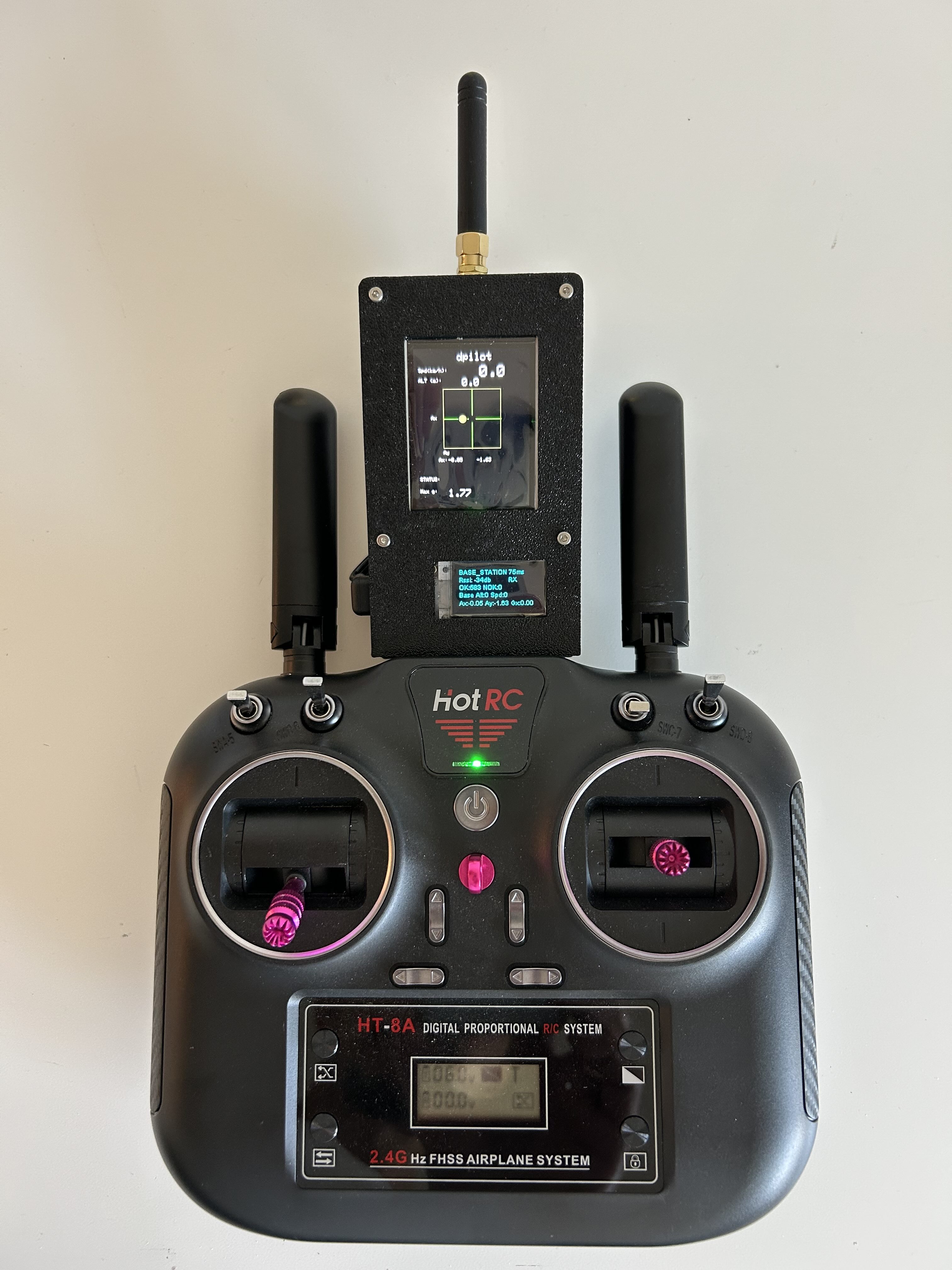
TFT Base Station Display
2" TFT with real-time G-G diagrams
Communication & Data Flow
📡 Communication System (ToDo)
- Set up 915MHz LoRa radio communication
- Implement AES-128 encryption for secure data transfer
- Test range capability in open field conditions
- Optimize antenna placement for maximum range
- Document interference patterns and mitigations
📊 Data Flow Architecture (ToDo)
- Implement 50Hz unified state communication
- Optimize packet structure for minimal overhead
- Develop robust error handling and packet recovery
- Create bidirectional command framework
- Set up logging and monitoring of data flow
📦 Packet Structure (ToDo)
- Design 60-byte optimized telemetry format
- Include CRC validation for data integrity
- Implement timestamping for synchronization
- Create command integration within packet structure
- Document protocol specifications for future reference
🔒 Security Implementation (ToDo)
- Deploy AES-128 encryption across all communications
- Develop key management system for secure operation
- Test encryption overhead and performance impact
- Create failsafe modes for communication loss
- Document security protocols and best practices
System Testing & Validation
🧪 Ground Testing
Work in progress- Set up bench testing environment
- Validate sensor calibration and integration
- Test unified state communication
- Verify SD card logging functionality
- Benchmark power consumption
📡 LoRa Range Testing
Work in progress- Perform field testing at varying distances
- Measure packet success rate vs. distance
- Test with different antenna configurations
- Optimize transmission parameters
- Document maximum reliable range
🛩️ Flight Testing
Work in progress- Complete Ranger integration with telemetry
- Perform initial taxi tests
- Validate in-flight data collection
- Test visual odometry during flight
- Verify endurance and performance
📈 Data Analysis & Validation
Work in progress- Develop post-flight analysis tools
- Validate sensor accuracy and precision
- Compare visual odometry to GPS data
- Create visualization dashboards
- Document system performance metrics
Manufacturing & Assembly Process
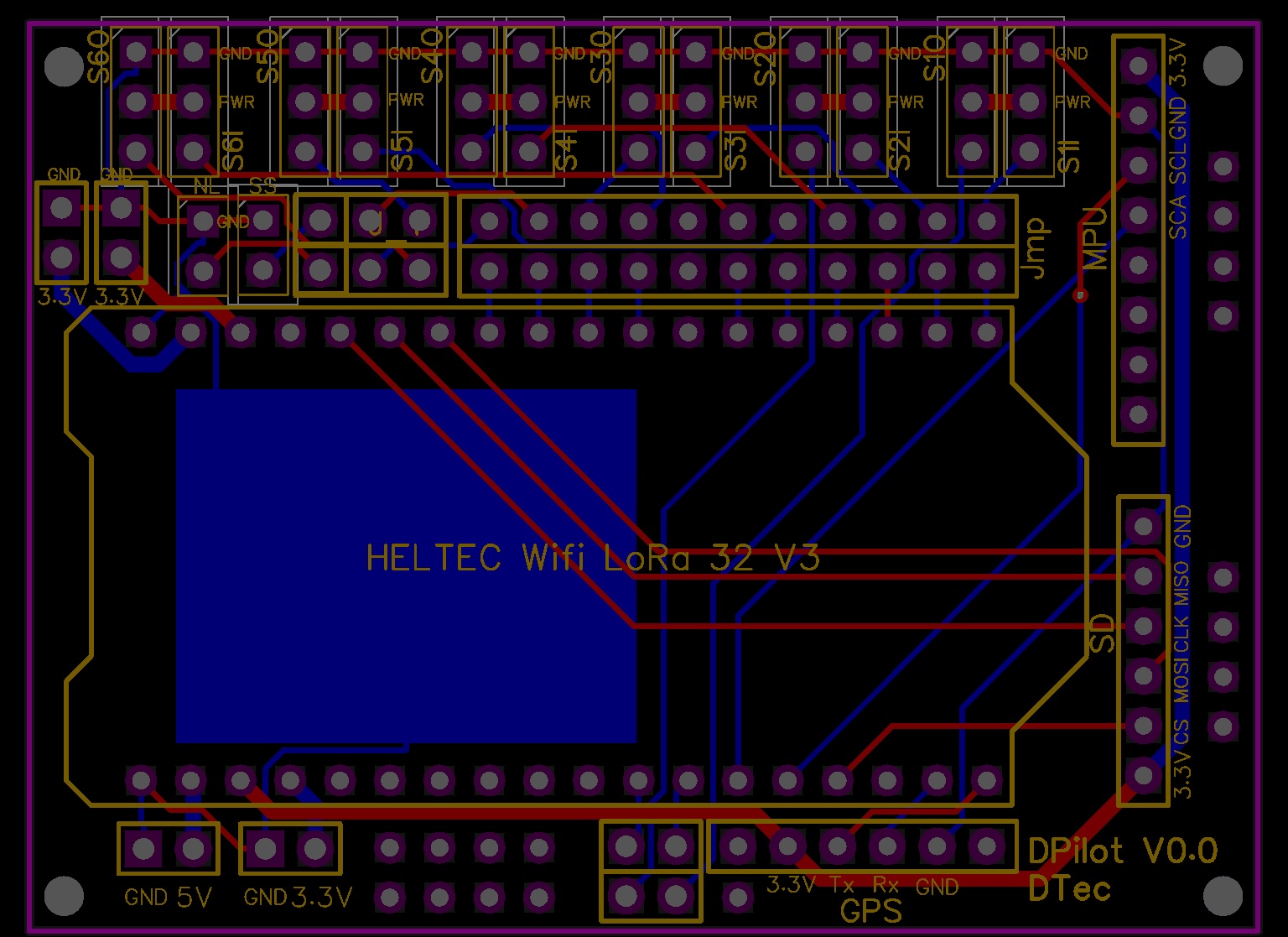
Custom PCB Design
Professional 2-layer PCB with integrated ESP32, LoRa, IMU, and SD card
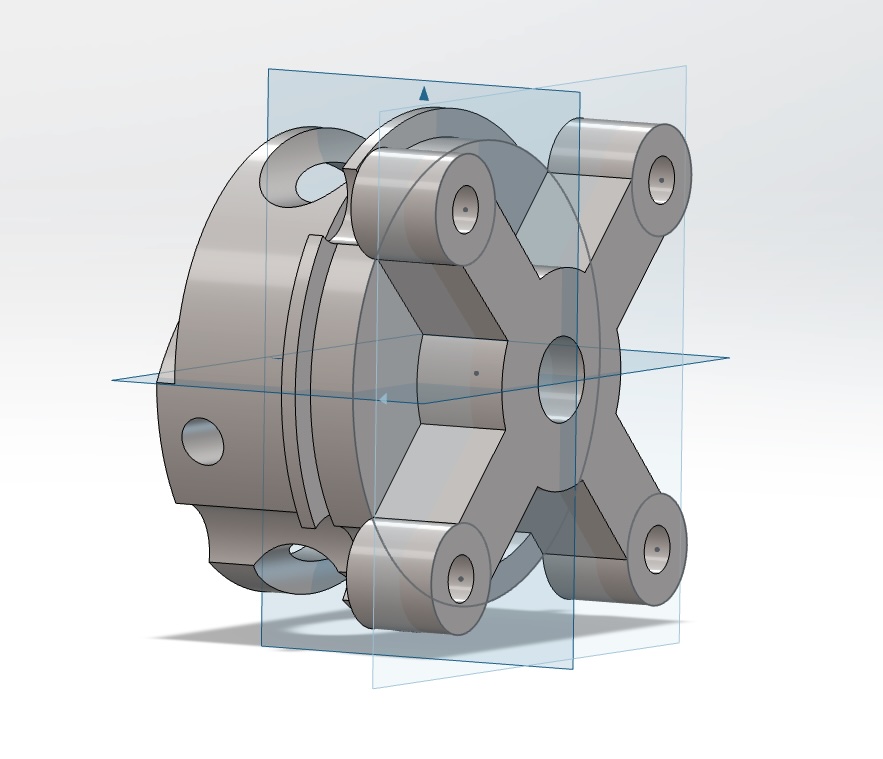
Motor mount
Custom component printing in PETG
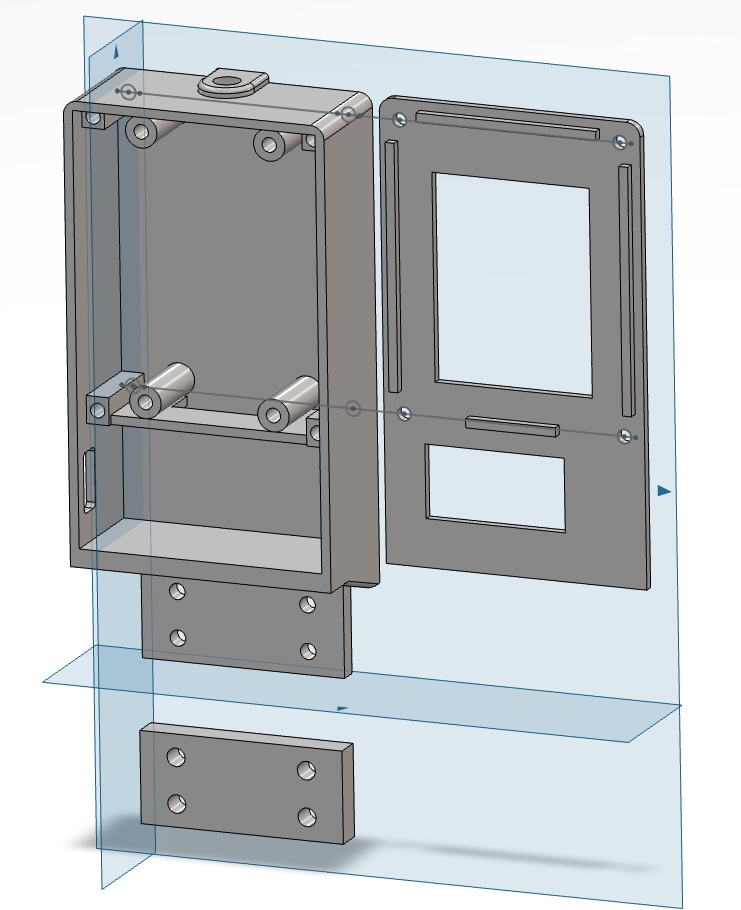
Ground Control TFTs Displays
Custom component printing in PETG
Research Applications & Future Development
🔬 Current Research Focus
- Visual odometry algorithm development
- AI-powered feature detection and matching
- Real-time SLAM implementation
- Multi-sensor fusion techniques
- Autonomous navigation strategies
🎯 Future Capabilities
- Full autonomous flight missions
- Object detection and avoidance
- Landing site detection and selection
- Swarm coordination protocols
- Advanced AI model deployment
📊 Data Applications
- Flight dynamics research
- Aerodynamic performance analysis
- Wing loading studies
- Visual navigation validation
- Autonomous systems development
Development Roadmap
Hardware Interface Documentation
🏗️ System Architecture Overview
├── I²C Bus 1: MPU6050 IMU (SDA=47, SCL=48)
Drone ESP32 (Heltec WiFi LoRa 32 V3)
├── I²C Bus 1: MPU6050 IMU (SDA=47, SCL=48)
├── I²C Bus 2: OLED Display (SDA_OLED, SCL_OLED)
├── SPI Bus 1: LoRa Module (Built-in)
├── SPI Bus 2: SD Card (CS=26, MOSI=42, SCLK=46, MISO=45)
├── Serial 1: USB Serial (115200 baud)
├── Serial 2: GPS Module (RX=19, TX=20, 38400 baud)
└── ADC: 7-channel analog inputs (A0-A6)
Base Station ESP32 (Heltec WiFi LoRa 32 V3)
├── I²C Bus 1: OLED Display (SDA_OLED, SCL_OLED)
├── SPI Bus 1: LoRa Module (Built-in)
├── SPI Bus 2: TFT Display (CS=26, DC=45, SCLK=46, MOSI=42)
└── Serial 1: USB Serial (115200 baud)
🎯 Automatic Role Detection
System automatically determines role based on MPU6050 presence:MPU6050 Detected → Drone Mode (sensor collection, SD logging)
No MPU6050 → Base Station Mode (command relay, TFT display)
📡 Complete Pin Assignment Tables
🚁 Drone Configuration DRONE MODE
| Component | Interface | ESP32 Pins | Configuration |
|---|---|---|---|
| MPU6050 IMU | I²C Bus 1 (Wire1) | SDA=47, SCL=48 | ±8g accel, ±500°/s gyro, 10Hz filter |
| GPS Module | Serial2 | RX=19, TX=20 | 38400 baud, 8N1 |
| SD Card | SPI Bus 2 (spi1) | CS=26, MOSI=42, SCLK=46, MISO=45 | Time-controlled logging, auto file management |
| Analog Sensors | ADC | A0(12), A1(13), A2(14), A3(15), A4(16), A5(17), A6(18) | 7-channel 8-bit ADC, 0-255 range |
| Logging Button | Digital Input | GPIO 41 (Pull-up) | Single-button start/stop logging |
| OLED Display | I²C Bus 2 | SDA_OLED, SCL_OLED | 128x64 status display |
| LoRa Module | SPI Bus 1 (Built-in) | Integrated | 915MHz, 21dBm, SF7, BW=500kHz, AES-128 |
| USB Serial | Serial (Built-in) | USB Port | 115200 baud, unified state packets (50Hz) |
📡 Base Station Configuration BASE STATION
| Component | Interface | ESP32 Pins | Configuration |
|---|---|---|---|
| TFT Display | SPI Bus 2 (spiTFT) | CS=26, DC=45, SCLK=46, MOSI=42 | 240x320 ST7789, G-G diagram, flight instruments |
| OLED Display | I²C Bus 1 | SDA_OLED, SCL_OLED | 128x64 system status |
| LoRa Module | SPI Bus 1 (Built-in) | Integrated | 915MHz, 21dBm, SF7, BW=500kHz, AES-128 |
| USB Serial | Serial (Built-in) | USB Port | 115200 baud, binary command interface |